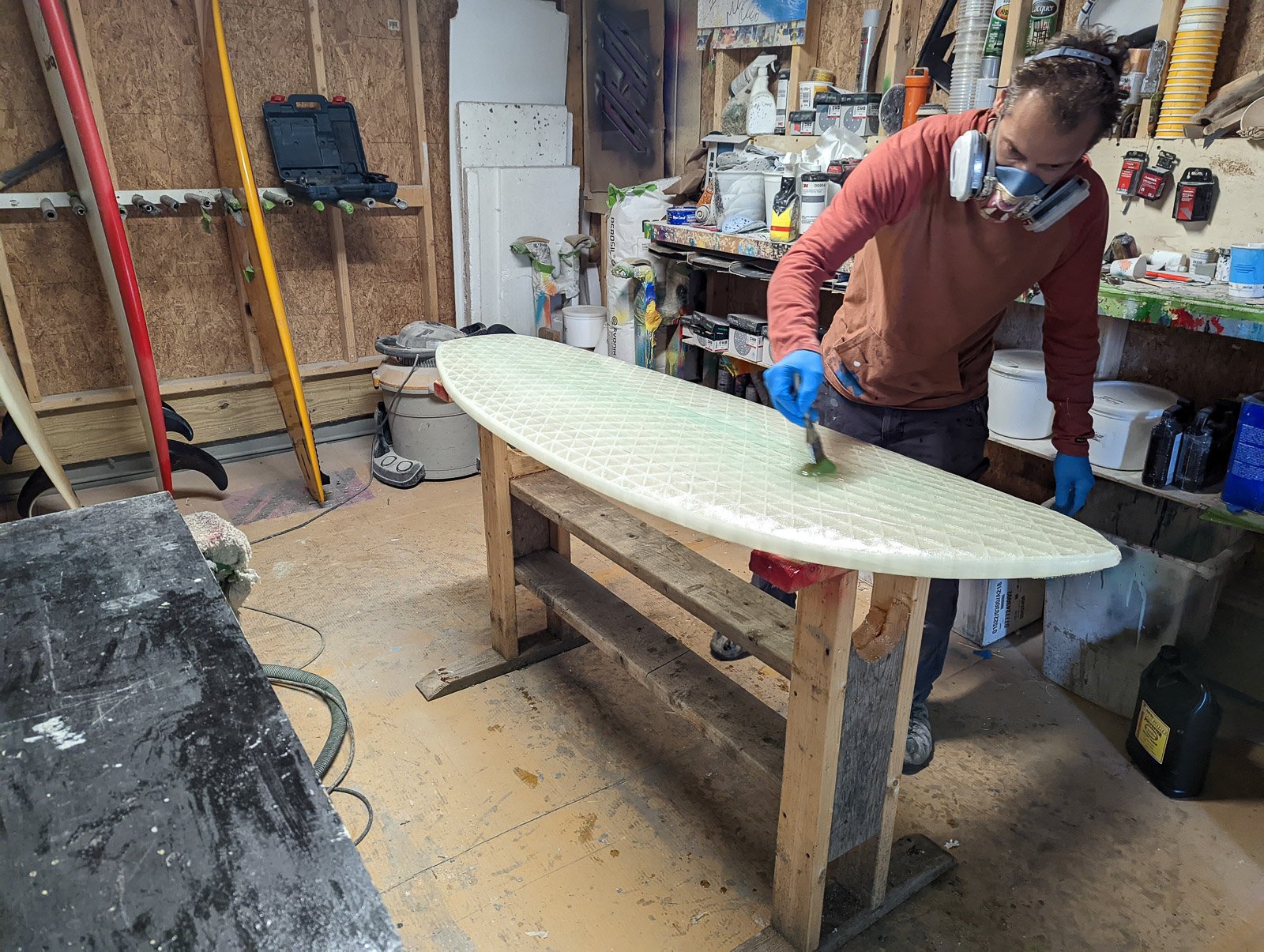Using Sustainable Materials (Resin)
At Blueprint, we work with the most sustainable materials possible, even when it makes production difficult. In our early days, we were struggling with an effective method for glassing our boards since when they were glassed, due to the lattice structure (i.e., big holes in the surface of the board), once saturated, the fiberglass would droop down, creating a very bumpy surface.
In our quest to find a suitable solution, we enlisted the help of an experienced board builder to assist us in glassing one of our boards. Our aim was to learn how to tackle glassing a blank from someone who had extensive experience working with fiberglass and resin. With his guidance, we were able to complete the glassing and finishing of the board within a span of two days, using Suncure laminating resin. Working with Suncare helped us solve most of our problems with the fiberglass sagging between the lattice structure. The quick cure time of the Suncure resin ensured that the fiberglass would not have a chance to sag down in between the lattice. We could now prep the board, expose it to light, and have it fully cured in just 5-10 minutes, compared to the 6-8 hours it would normally take with regular epoxy.
We managed to create a board with a smooth finish that had a similar feel to the ones found in board shops, but it did come with a few drawbacks. Firstly, it was quite heavy, mainly due to the use of around 16oz of fiberglass on the deck and bottom, as well as a dense and heavy lattice structure. In a future blog post, we will provide a more in-depth look into the weight, lattice structure, and layup of the board.
Although Suncure initially seemed like the perfect solution for making our boards, we soon realized that it was not a sustainable product since it's derived from virgin materials. Additionally, due to its high VOC content, it would require significant ventilation to make the workspace safe and not harmful for those building the boards. Therefore, after this board, all of our boards have been made with epoxy, which is 29% bio-based and emits low VOCs without compromising on strength and weight. We have been exploring other bio-based resins, which have more bio-based content. However, at the time of this post, other bio-based resins lack consistency, have a color (brown tint), or other performance characteristics that have swayed us towards using the 29% bio-based resin.


